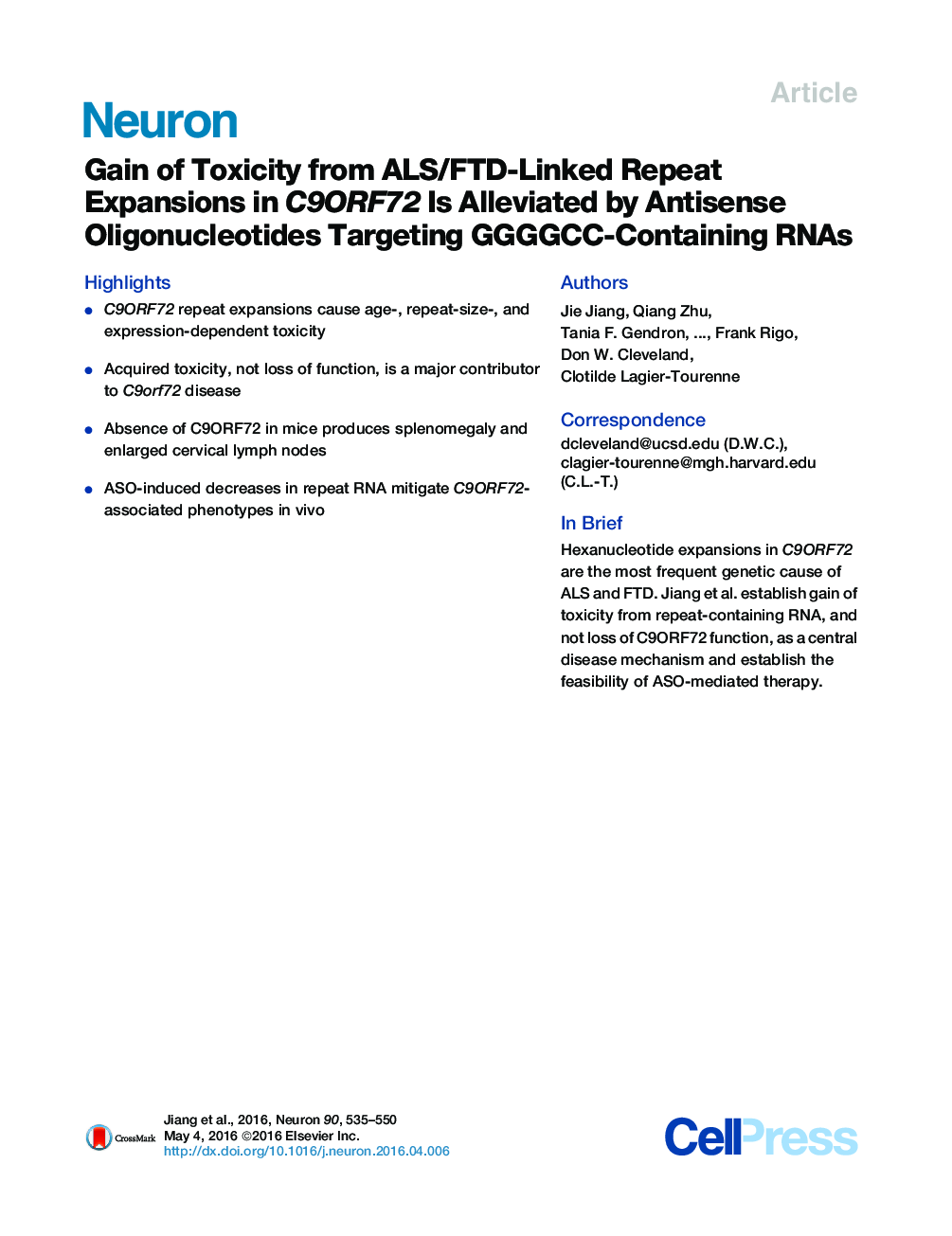| Article ID | Journal | Published Year | Pages | File Type |
|---|---|---|---|---|
| 4320707 | Neuron | 2016 | 16 Pages |
•C9ORF72 repeat expansions cause age-, repeat-size-, and expression-dependent toxicity•Acquired toxicity, not loss of function, is a major contributor to C9orf72 disease•Absence of C9ORF72 in mice produces splenomegaly and enlarged cervical lymph nodes•ASO-induced decreases in repeat RNA mitigate C9ORF72-associated phenotypes in vivo
SummaryHexanucleotide expansions in C9ORF72 are the most frequent genetic cause of amyotrophic lateral sclerosis and frontotemporal dementia. Disease mechanisms were evaluated in mice expressing C9ORF72 RNAs with up to 450 GGGGCC repeats or with one or both C9orf72 alleles inactivated. Chronic 50% reduction of C9ORF72 did not provoke disease, while its absence produced splenomegaly, enlarged lymph nodes, and mild social interaction deficits, but not motor dysfunction. Hexanucleotide expansions caused age-, repeat-length-, and expression-level-dependent accumulation of RNA foci and dipeptide-repeat proteins synthesized by AUG-independent translation, accompanied by loss of hippocampal neurons, increased anxiety, and impaired cognitive function. Single-dose injection of antisense oligonucleotides (ASOs) that target repeat-containing RNAs but preserve levels of mRNAs encoding C9ORF72 produced sustained reductions in RNA foci and dipeptide-repeat proteins, and ameliorated behavioral deficits. These efforts identify gain of toxicity as a central disease mechanism caused by repeat-expanded C9ORF72 and establish the feasibility of ASO-mediated therapy.
